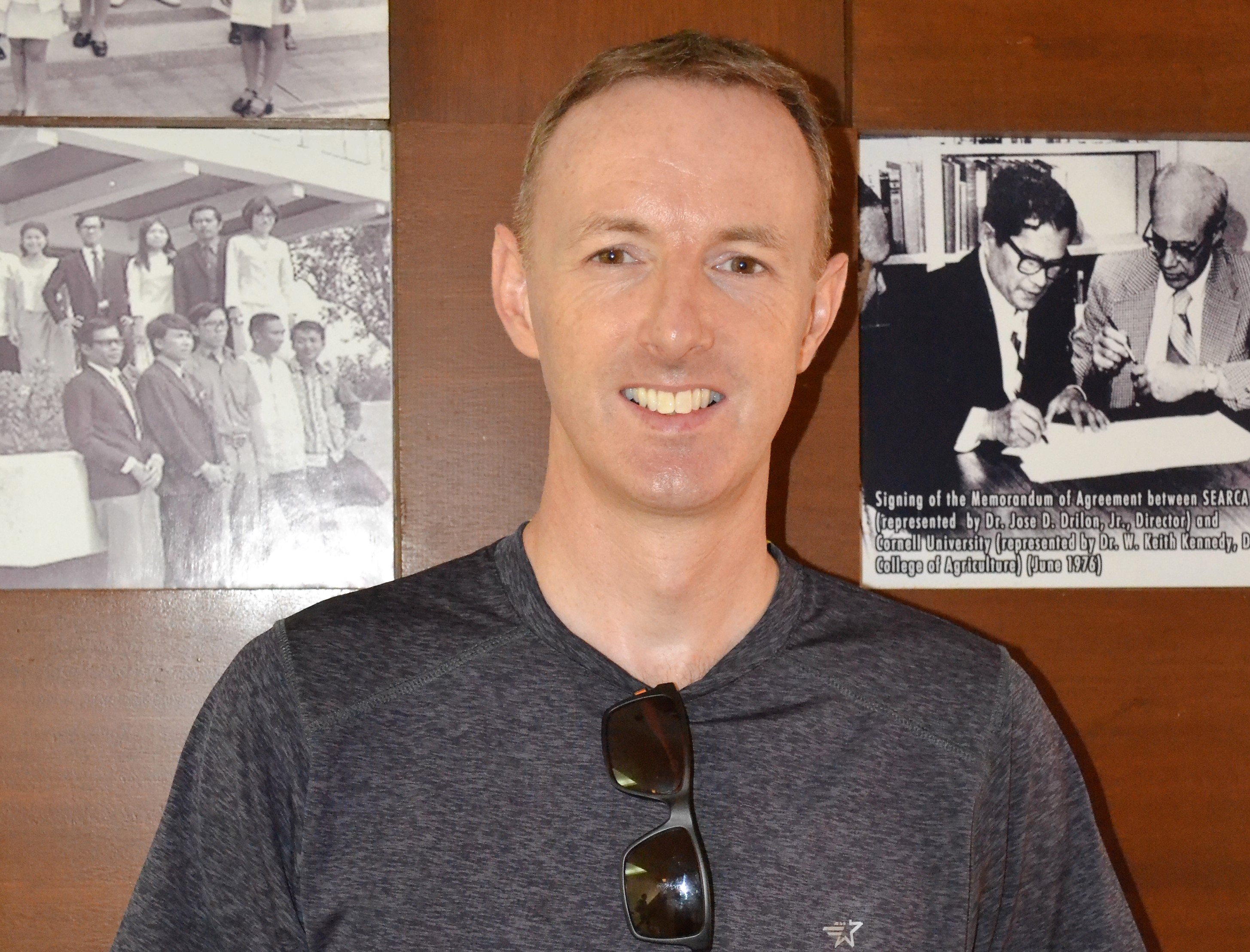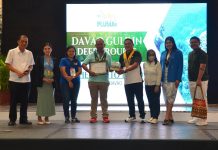 Geographically, the Philippines is an upland country because 60% of its 30 million hectares are classified as such. The uplands are rolling to steep areas where both agriculture and forestry are practiced on slopes ranging 18% upward.
Geographically, the Philippines is an upland country because 60% of its 30 million hectares are classified as such. The uplands are rolling to steep areas where both agriculture and forestry are practiced on slopes ranging 18% upward.
Uplands also include table lands and plateaus lying at higher elevations not normally suited to wet rice unless some form of terracing and groundwater exist.
Uplanders – which comprised about 30% of the country’s total population with almost half of them living within forests – are often referred to as the “poorest of the poor” in the Philippine society since they survive below the poverty line.
Upland inhabitants are primarily poor farming families with an insecure land tenure. Most of those who are engaged in farming belong to “the least educated, least paid, least healthy, least hopeful, and most neglected (in terms of) agricultural development of all people in the Philippines.”
A study commissioned by the National Research Council Project – entitled “Agricultural Sustainability and the Environment in the Humid Tropics” – found out that subsistence food production, rather than forestry, is the over-riding priority of the upland farmers.
It’s no wonder why “most of the country’s once rich forests are gone,” according to the UN Food and Agriculture Organization’s (FAO) study entitled, “Sustainable Forest Management.”
“We have lost most of our forest of old over the past 50 years and, along with them, many of the ecological services they provide,” deplores Peter Walpole, executive director of the Environmental Science for Social Change (ESSC).
But there is a solution in sight. “The problems that beset the uplands in the Philippines, particularly deforestation, can be curtailed by planting perennial crops,” said Craig B. Jamieson, a British national (he was born in Harpenden, Hertfordshire in United Kingdom) who came to the Philippines in March 2012 and now considers it his “home-from-home.”
Jamieson, whose expertise is in bioenergy (courtesy of the Royal Agricultural College in Cirencester), said that one of the answers to the dwindling forest cover is to change the system of agriculture from short-term crops to planting of perennials. Perennial comes from the Latin root word perennis, which means “lasting through the whole year.”
In agriculture, perennialization means converting an annual-based crop system to a perennial (enduring) one.
As advocated by World Agroforestry Center (known as ICRAF), where Jamieson serves as biomass consultant, perennialization involves “the substitution of annual crops with perennial plants and trees as they provide continuous ground cover and deep root systems for soil protection and stabilization, while increasing carbon stocks and reducing soil nutrients lost by leaching.”
Jamieson explained that “the integration of trees into farming practices has the potential to sustain land productivity in addition to providing useful tree products such as firewood and fodder.”
In the Philippines, corn is planted to about 30% of the country’s arable lands. “Corn is one of the most common animal feeds in the world, but it can cause serious erosion in the uplands and increase the risk of landslides,” he pointed out.
Encroaching into the uplands has also lead to the cutting of trees. “In the last 100 years, the trend has been a continuous loss of forests, starting in the 1900s when there was still 70% standing forest,” Jamieson said. “In 1999, only 18.3% was left. If this trend continues, the Philippines will have no forest left in the very near future.”
Which is why Jamieson is recommending the planting of perennials, which is actually a form of agroforestry. Based on existing studies, he said, the system can provide the following benefits to the environment: extend the productive life of soils; develop resilience to extreme rainfall events, droughts and insect pressures; reduce land run-off that creates coastal dead zones with disastrous effects on fisheries; maintain the quality of surface and groundwater; and build food security.
“Compared to annual crops, perennials have many ecological advantages,” Jamieson said. “First, they live longer and develop deeper root systems over time; hence, perennials have greater access to groundwater. Also, their deep root systems make them less prone to wind and rain damage, helping farmers adapt to climate extremes and protecting the soil from erosion.”
Farmers can save money from buying chemicals like pesticides and herbicides. “Aside from the obvious savings on expenses, the planting of perennials likewise reduces the impact of chemicals on local watersheds,” Jamieson said.
The ICRAF consultant said that perennials can be in the form of grasses, herbs, and fruit trees. Examples include avocado, banana, grapes, basil, fennel, garlic and ginger.
“Finding alternatives to annual cropping systems becomes more urgent as the world faces the need to mitigate and adapt to climate change,” Jamieson said. “Perennialization could play a significant part in providing more robust, productive, and environmentally benign agricultural systems in the future.”
Jamieson graduated his master’s degree in 2006 and came to the Philippines six years later. “I had done lots of consultancy in bioenergy prior to that, for the government of the United Kingdom, the Food and Agriculture Organization of the United Nations, and others, but I really wanted to go beyond just consultancy and try to put something into practical use.”
He settled in Los Baños, Laguna, as it has the largest scientific community in Southeast Asia. “It has a lot of good people in my field who I could work with, to write proposals, and develop ideas together.
“I had no job offer when I first came here: it was one of those calculated risks that worked out in my case,” he recalled. “About a year after moving to the Philippines I had secured about US$1 million in funding for a project to research bioenergy from rice straw, and I ended up leading the three-year project on behalf of the International Rice Research Institute.”
But it was through the World Agroforestry Centre in Los Baños that he got the opportunity to live in the Philippines for longer period. “I have done work for them, mainly around preparing funding proposals and using my horticulture and bioenergy background to develop project ideas for trees on farms,” he said.
On why he preferred to stay at Los Baños, Jamieson said: “(It) is a very suitable base for me to do what I wanted. I like that it’s close enough to Manila to be convenient but far enough away to have some peace and fresh air. I like to have space to think.”
When asked about the people, he replied: “I enjoy being with Filipinos. When I lived in London before, some of my best friends were Filipinos and I find them easy to get along with.”
Jamieson further revealed, “I have traveled around many amazing countries in Asia, but whenever I get back to the Philippines, I think ‘Ah, that’s better.’ It feels like a home-from-home somehow. I’m thankful to the Filipinos for taking me to their hearts.”
Perhaps, it was for this reason why he wants to save the country’s uplands from total deterioration.
“The upland (area) is the ecological and social frontier where the battle for (the) future survival of the Filipino society will be fought,” commented Dr. Percy E. Sajise, whose pioneering work and contribution in the field of ecology are considered a breakthrough in providing solutions to pressing environmental problems. “We must help fight this battle not because of any ideology or creed but primarily because we must assure the survival of the coming generation of Filipinos.”






